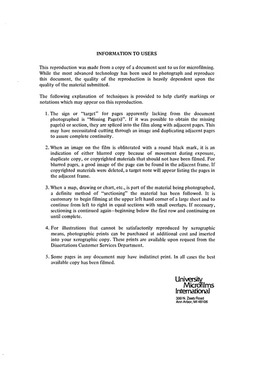| dc.contributor.author | Schnee, Fred B., | en_US |
| dc.date.accessioned | 2013-08-16T12:29:01Z | |
| dc.date.available | 2013-08-16T12:29:01Z | |
| dc.date.issued | 1983 | en_US |
| dc.identifier.uri | https://hdl.handle.net/11244/5198 | |
| dc.description.abstract | Chapter II. Conditional Polygenic Effects in the Sternopleural Bristle System of Drosophila Melanogaster. II. Polygene Mapping. The intrachromosomal architecture of third chromosomes isolated from lines of Drosophila melanogaster selected for high or low sternopleural bristle number was examined at 18(DEGREES) and 25(DEGREES)C. Two components of sternopleural bristle development, bristle number and temperature-sensitivity, were often found to be determined by different regions of chromosome 3. In many cases, however, there was tight linkage between the polygenic loci which determine these two characteristics. In one of the low selection lines, further study was possible and a temperature-dependent polygenic locus was mapped. It is suggested that genotype x environmental interactions be thought of in terms of conditional polygenic effects. Such conditionality may be one of the means by which polygenic variation is maintained within a population in the face of selection for an optimum phenotype. | en_US |
| dc.description.abstract | Chapter I. Conditional Polygenic Effects in the Sternopleural Bristle System of Drosophila Melanogaster. I. Response to Selection and Whole Chromosome Analysis. The chromosomal architecture of genotype x temperature interactions was investigated in lines of Drosophila melanogaster selected for increased or decreased sternopleural bristle number at 18(DEGREES), 25(DEGREES) and 29(DEGREES)C. In general such interactions were found to have a stabilizing effect on the sternopleural bristle number phenotype. In addition, the polygenic modifiers of the sternopleural phenotype studied, mean bristle number and response to temperature, were found to be separable at the chromosomal level. While chromosome 3 had the largest effect on mean bristle number, chromosome 2 was most important in determining the temperature effect at 29(DEGREES)C. | en_US |
| dc.format.extent | ix, 115 leaves : | en_US |
| dc.subject | Biology, Genetics. | en_US |
| dc.title | Genotype x environment interactions in Drosophila melanogaster / | en_US |
| dc.type | Thesis | en_US |
| dc.thesis.degree | Ph.D. | en_US |
| dc.thesis.degreeDiscipline | Department of Biology | en_US |
| dc.note | Source: Dissertation Abstracts International, Volume: 44-11, Section: B, page: 3303. | en_US |
| ou.identifier | (UMI)AAI8404566 | en_US |
| ou.group | College of Arts and Sciences::Department of Biology | |
